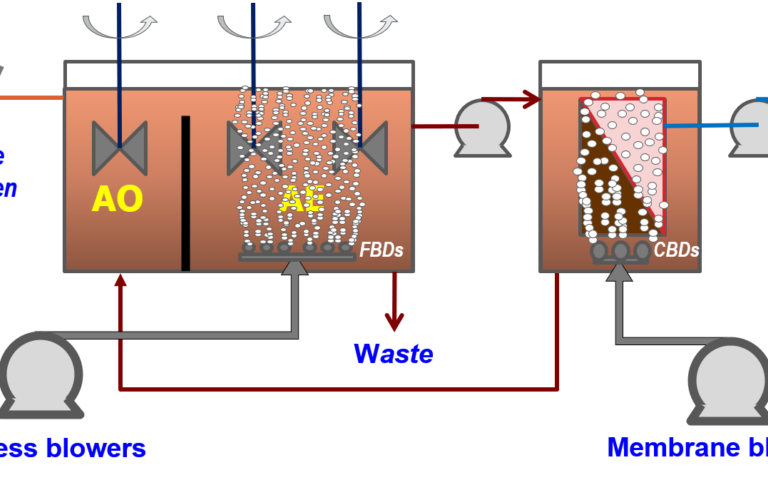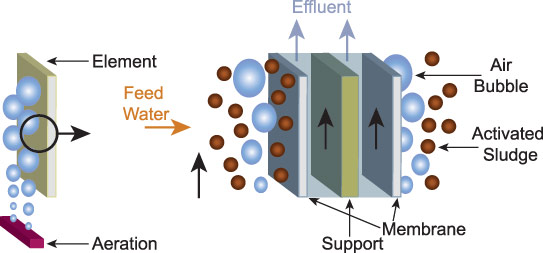Troubleshooting Common Issues with Membrane Bioreactor Systems
Troubleshooting Common Issues with Membrane Bioreactor Systems
Blog Article
Membrane Layer Bioreactors Discussed: Efficient Solutions for Tidy Water
Membrane layer bioreactors (MBRs) have arised as an innovative solution for attending to journalism obstacles of wastewater therapy. By incorporating organic procedures with innovative membrane filtration, MBRs not only enhance the high quality of treated water however additionally lower the spatial needs of treatment centers. As ecological worries magnify, the role of MBR innovation in promoting sustainable water management becomes increasingly significant. However, the intricacies of their procedure, benefits, and prospective applications merit a closer examination to fully understand their influence on the future of water therapy.

What Are Membrane Bioreactors?
Membrane layer bioreactors (MBRs) are sophisticated wastewater treatment systems that incorporate organic degradation procedures with membrane purification modern technology. This integration enables the efficient removal of impurities from water, making MBRs a favored selection in different applications, including municipal wastewater treatment and commercial effluent monitoring.

Among the vital advantages of MBRs is their capacity to produce high-grade effluent, typically suitable for reuse in irrigation or commercial processes. Furthermore, MBRs require a smaller impact compared to traditional therapy systems, making them perfect for city settings where area might be limited.
Furthermore, MBRs can properly deal with varying influent lots and are less prone to the results of harmful shocks. These attributes add to their growing appeal as a lasting solution for attending to the increasing need for tidy water while reducing environmental influences.
How Membrane Bioreactors Work
While the procedure of membrane layer bioreactors (MBRs) might appear complex, it fundamentally focuses on the harmony in between organic procedures and membrane layer purification. MBRs integrate a biological therapy procedure, generally activated sludge, with a membrane layer separation device to deal with wastewater efficiently.
In an MBR system, wastewater is initial introduced into a bioreactor where bacteria break down raw material and various other impurities. The organic task lowers the focus of toxins while advertising the development of biomass. Following this organic treatment, the blended liquor is subjected to membrane filtration, which can be microfiltration or ultrafiltration, depending on the desired effluent quality.
The membrane layers work as a physical obstacle, permitting water and little solutes to pass while maintaining suspended solids and larger particles. This makes it possible for the system to keep a high concentration of biomass within the reactor, enhancing the therapy effectiveness.
Additionally, the constant separation of cured water from the biomass promotes a small style and minimizes the impact of the therapy center. On the whole, the mix of biological destruction and membrane layer filtering in MBRs causes efficient and trusted wastewater treatment, making certain high-grade effluent ideal for various applications.
Advantages of MBR Technology
One of the crucial benefits of membrane layer bioreactor (MBR) modern technology is its capability to produce high-grade effluent with a dramatically minimized footprint go to this web-site contrasted to conventional wastewater therapy techniques. MBR systems properly integrate organic treatment and membrane layer filtration, causing exceptional elimination of contaminants, consisting of put on hold solids, microorganisms, and natural matter. This capacity brings about effluent that commonly meets or goes beyond stringent regulative criteria for reuse and discharge.
Additionally, MBR modern technology permits higher biomass focus, which enhances the treatment effectiveness and lowers the required reactor quantity. This portable design is especially valuable in urban areas where area is restricted. The functional flexibility of MBR systems likewise indicates they can adapt to differing influent qualities and flow rates, making them appropriate for a wide variety of applications.
Furthermore, the minimized sludge manufacturing connected with MBR processes contributes to lower operational and upkeep prices. The membrane layers serve as look at here now a physical barrier, decreasing the threat of clogging and allowing longer functional durations between cleansing. On the whole, the benefits of MBR technology make it an attractive service for sustainable wastewater treatment, attending to both environmental worries and the requirement for effective source administration.
Applications of Membrane Layer Bioreactors
With their adaptability and effectiveness, membrane bioreactors (MBRs) discover applications across various sectors, including municipal wastewater therapy, commercial procedures, and even water reclamation. In municipal settings, MBRs give a portable remedy for dealing with wastewater, successfully eliminating contaminants while at the same time producing high-grade effluent that fulfills rigorous regulative requirements. This makes them particularly ideal for locations with limited room.
In industrial applications, MBR technology is made use of for treating process water, specifically in markets such as food and beverage, drugs, and petrochemicals. These markets benefit from MBRs' capacity to deal with high organic lots and their performance in recouping valuable sources from wastewater, such as nutrients and water.
Additionally, MBRs play an important role in water recovery efforts, enabling the reuse of treated wastewater for irrigation, commercial processes, or also as potable water after additional treatment (Membrane Bioreactor). Their performance in removing toxins and pathogens makes them a trusted option for ensuring water top quality in various reuse applications
Future of Water Therapy Solutions
The future of water treatment options is positioned for transformative developments driven by technical innovation and boosting ecological awareness. As international water scarcity ends up being a pushing concern, new methods, consisting of membrane bioreactor (MBR) systems, are readied to play a crucial role in improving the performance and sustainability of water therapy processes.
Arising technologies such as artificial intelligence and artificial intelligence are anticipated to maximize treatment operations, enabling real-time tracking and predictive upkeep. This will boost the overall dependability and efficiency of water treatment centers. Innovations in membrane layer products, such as graphene and nanofiltration, assure to raise permeation prices and reduce fouling, leading to lower power intake and functional prices.
Additionally, the assimilation of renewable resource sources into water therapy plants will certainly contribute to greener practices. The round economic climate model will certainly additionally acquire grip, urging the healing of valuable sources from YOURURL.com wastewater, such as nutrients and energy.
Conclusion

Membrane layer bioreactors (MBRs) have emerged as a sophisticated option for dealing with the pushing challenges of wastewater treatment. By incorporating biological procedures with innovative membrane purification, MBRs not only improve the top quality of treated water however additionally decrease the spatial needs of treatment facilities.One of the crucial benefits of membrane bioreactor (MBR) innovation is its capacity to produce top notch effluent with a considerably minimized impact compared to traditional wastewater therapy approaches.With their versatility and effectiveness, membrane layer bioreactors (MBRs) locate applications throughout various industries, consisting of metropolitan wastewater therapy, commercial procedures, and also water recovery.In verdict, membrane bioreactors represent a considerable improvement in wastewater therapy modern technology, incorporating biological processes with efficient membrane filtering to create top notch effluent.
Report this page